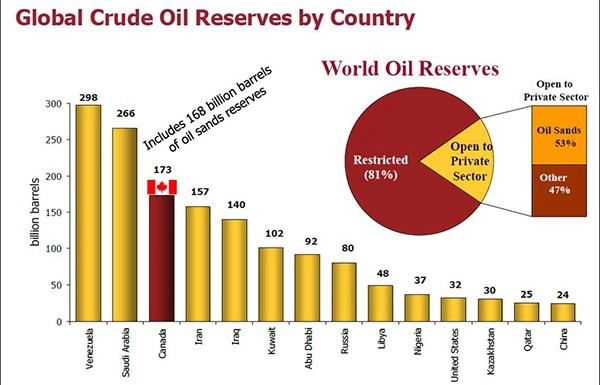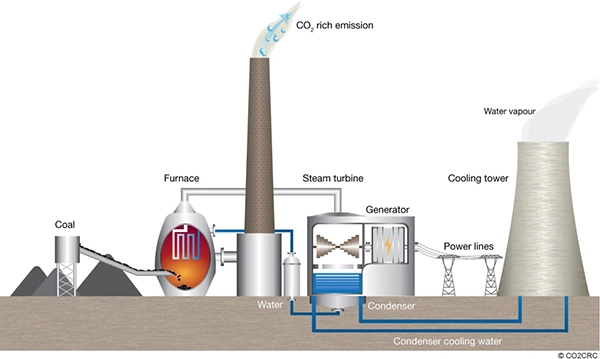History of Crude Oil. How much left on our Earth? After Alternatives?
By KnowledgeVeto Saturday, June 22, 2024 18:45

© Images Provided By Bing/Google
Where does oil come from?

As the layers piled up, the earth's heat and pressure turned the remains of these plants and animals into crude oil, also known as petroleum. The term "petroleum" really means "rock oil" or "oil from the earth."

Crude oil, also known as petroleum, is a liquid found in the Earth made up of hydrocarbons, organic molecules, and trace amounts of metal. While hydrocarbons are usually the major component of crude oil, their composition can range from 50% to 97% depending on the kind of crude oil and the method of extraction. Organic molecules such as nitrogen, oxygen, and sulfur make up between 6% and 10% of crude oil, while metals such as copper, nickel, vanadium, and iron make up less than 1% of the total makeup.

Crude Oil Formation

Crude oil is formed by heating and compressing organic molecules over time. Most of the oil we obtain now is derived from the remains of prehistoric algae and zooplankton that have fallen on the bottom of an ocean or lake. Over time, this organic material mixed with mud and was heated to high temperatures by the pressure exerted by heavy layers of silt. This process, known as diagenesis, converts the chemical composition first into a waxy molecule called kerogen, and then, with higher heat, into a liquid via catagenesis.

Crude oil and petroleum are examples of fossil fuels since they contain hydrocarbons derived from ancient plants and animals that lived in the ocean millions of years ago. Before dinosaurs existed, small organisms known as diatoms died and settled on the ocean floor. They were eventually buried under layers of sand, silt, and rock.
When Human knows the Importance of Oil
Humans have been aware of oil for millennia, but its importance as an energy source increased dramatically during the Industrial Revolution of the 18th and 19th centuries. The discovery of abundant oil deposits, such as those found in Pennsylvania, the United States, and later in locations such as the Middle East, transformed energy output. The discovery of the internal combustion engine increased the demand for oil, particularly in transportation.
Crude Oil Extraction

The most frequent way of extracting crude oil is drilling. Geologists will first select a piece of land they feel has oil flowing beneath it. There are several means for accomplishing this, but the most commonly utilized include satellite photography, gravity meters, and magnetometers. Once a consistent flow of oil is discovered, drilling underground can commence.
Drilling is not a very complicated process, but a standard method has been devised to ensure optimal efficiency. The initial phase in the procedure is to drill into the ground exactly where the oil is found. Once a continuous flow is detected at a specific depth beneath the ground, a perforating pistol is dropped into the well. A perforating pistol has explosive charges that allow oil to flow through holes in the casing. After the casing is appropriately perforated, a tube is inserted into the hole, allowing oil and gas to flow up the well. To seal the tubing, a packer is run along the exterior of it. The final step involves the installation of a device known as a Christmas tree, which allows oil workers to manage the flow of oil from the well.
Oil Sands
Oil can also be derived from oil sands (also known as tar sands). Oil sands are often made up of sand or clay combined with water and bitumen, a highly viscous type of crude oil. Because of the high viscosity of oil sands, the extraction procedure differs significantly from drilling. Rather than utilizing drills, crude oil is collected from oil sands using strip mining or other procedures that reduce the oil's viscosity. This process is far more expensive than standard drilling and is only found in Canada and Venezuela. As oil demand rises and supplies decline, oil sands could be one of the last sustainable techniques of obtaining crude oil from the Earth.
Worldwide Oil Production

While almost every country in the world relies on oil, not all generate it. The top five oil producers are Saudi Arabia, Russia, the United States, Iran, and China. It is vital to clarify that the term "production" refers to the extraction of crude oil from oil reserves. The top five oil-consuming countries are the US, China, Japan, Russia, and Germany.
How much left on our Earth?
Global reserves are expected to run out by 2039 if consumption continues at its current rate. Scientists and engineers are working hard to find ways to collect and process crude oil more efficiently, in order to avoid a worldwide energy crisis.
According to the United States Energy Information Administration's Annual Energy Outlook 2022, petroleum and natural gas will remain the primary sources of energy consumption in the United States until 2050, despite the growing popularity of renewables. The outlook's reference case, which takes into account current laws and regulations, expects an increase in overall energy consumption as a result of population and economic growth.
While renewables, particularly in electricity generation, are predicted to expand significantly, petroleum will continue to account for the majority of energy consumption, followed by natural gas.
What is oil energy?
Oil energy is the energy obtained from the extraction, processing, and use of crude oil (also known as petroleum). It is a fossil fuel that contains hydrocarbons, which are organic compounds made up of hydrogen and carbon atoms. Oil energy contributes significantly to satisfying global energy demands and is utilized for a variety of reasons, including transportation, electricity generation, heating, and the manufacture of several everyday products.
How does oil energy work?
Oil energy is produced by combusting oil in oil-fired power plants. The combustion process produces steam, which turns turbines and spins a generator that produces electrical power.
How does oil actually produce energy?
First, oil is taken from subsurface reservoirs by drilling or fracking. Natural gas extraction is frequently carried out using the same procedure. The extracted oil undergoes numerous stages before being used.
Once the oil has been recovered and separated from the natural gas, it is delivered to refineries. At refineries, the oil is refined to separate its components and remove impurities. This refining process creates a variety of petroleum products, including gasoline, diesel, jet fuel, heating oil, and chemicals.
After being processed, the oil can be delivered directly to consumers or to oil-fired power plants. An oil-fired power station uses oil to generate energy through a combustion process.

Combustion: The oil is burned in a combustion chamber of a boiler, producing intense heat.
Steam Generation: The heat from the combustion process converts water into steam.
Turbine Operation: The steam is directed into a turbine, a device with rotating blades. As the steam flows over the blades, it causes them to spin at high speeds.
Electricity Generation: The spinning blades are connected to a generator, which produces electricity as it rotates.
Steam Condensation: After passing through the turbine, the steam is condensed back into water and returned to the boiler chamber to be reheated and used again.
The oil extraction and energy production process
Oil energy extraction and production comprise several important phases ranging from exploration to various applications:
Oil energy applications: what is oil used for?

The environmental impact of oil energy, among other downsides.

Oil energy can be tremendously beneficial in some cases, but we must examine the negative consequences of continuing dependant on oil.
Environmental Impact
One big downside of using oil energy is the environmental impact. The extraction, refining, and combustion of oil can emit greenhouse gases such as carbon dioxide and methane, which contribute to climate change. Oil spills during transportation or accidents on drilling sites can have serious consequences for ecosystems and wildlife.
Non-Renewable Resource
Oil is a nonrenewable resource, which means it is limited and will decline over time. As oil reserves decline, extracting them becomes more difficult and expensive. This reliance on a finite resource raises worries about energy security and the need for a shift to sustainable and renewable sources.
Geopolitical issues and dependencies
Geopolitical issues influence the global oil market, potentially causing conflict and instability. Countries that rely significantly on oil imports may suffer economic and geopolitical dangers. Oil price fluctuations can have an impact on energy costs, inflation, and the global economy. Oil has also played a significant role in other wars, including the Iran-Iraq War, the Gulf War, and the Syrian Civil War. These wars have resulted in death and destruction while also destabilizing the region.
Wide applications and usage
Oil energy has diverse applications and uses across multiple sectors. It is used as a fuel for transportation, providing energy for cars, trucks, airplanes, and ships. It is also utilized for heating purposes in residential, commercial, and industrial settings. Additionally, oil is an essential feedstock for the production of various petrochemicals and plastics.
Fossil fuel alternatives: what can we utilize instead of oil?
Natural Gas Energy
Natural gas is a fossil fuel similar to oil, but with half the carbon emissions. Natural gas is abundant in the United States and can be used in a variety of applications. Natural gas burns much cleaner than oil, which minimizes greenhouse gas emissions. On the downside, it is still a fossil fuel and thus not a permanent energy source. However, it can be an excellent bridging fuel until we transition to renewables.
Solar energy

Solar energy converts sunlight into electricity using photovoltaic (P.V.) panels or concentrated solar power (CSP) systems. Solar energy is both renewable and readily available. It has the potential to reduce our dependency on fossil fuels while also lowering long-term energy prices for consumers. Best of all, solar produces no direct emissions. There are certain drawbacks, however. Solar energy relies on sunlight, which is not always accessible, and installation costs and space requirements are significant.
Wind energy

Wind turbines convert wind power into electricity. It is renewable and clean, produces no direct emissions, and can be deployed quickly, similar to solar. However, it is subject to fluctuating wind patterns and may have an affect on both the visual and the land. Wind energy's intermittent nature necessitates the utilization of energy sources or backup systems.
Hydropower

Hydropower uses the energy of flowing or falling water to generate electricity using turbines. Hydropower is not only renewable and reliable, but it is ideal for large-scale power generation. Hydroelectric dams are long-lasting and provide additional services such as flood control and water management. That is not to argue that there won't be social and environmental issues to address. Hydropower might have.
Environmental and ecosystem disturbances can cause the displacement of communities and habitats. There aren't many suitable areas, and there may be sedimentation and reservoir management difficulties to address.













